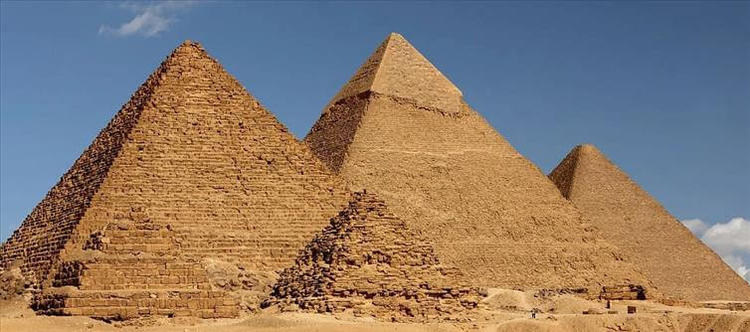
Through the use of sophisticated radar scanning technology, researchers have discovered a vast subterranean system beneath the Pyramids of Giza. Researchers Corrado Malanga of the university of Pisa and Filippo Biondi of the university of Strathclyde mapped the underground terrain using Synthetic Aperture Radar (SAR).
Their investigation disproved long-held beliefs about the function and construction of the pyramids by revealing a vast network that stretched around two kilometers beneath each of the three. The internet has been reassured by this fresh knowledge that there is much more to the pyramid's construction than first meets the eye, as the tale behind its construction is still not credible.
Complex system beneath Khafre Pyramid
Beneath the Pyramid of Khafre, the second-largest pyramid on the plateau, was one of the most remarkable discoveries. Near its base, researchers found five identical structures with many layers connected by a system of geometric routes. After more investigation, eight deep cylindrical wells were found, each encircled by spiral passageways that descended to an incredible 648 meters. These pathways lead to two enormous cube-shaped constructions at the lowest levels, each 80 meters across, indicating a sophisticated and purposeful underground layout.
Did these tombs have a sophisticated energy system?
Egyptologists have maintained for decades that the pyramids were principally royal tombs. The recently discovered structures, however, support other hypotheses that contend the pyramids may have had a more intricate purpose. They may have been a component of an ancient energy system, according to some academics. Notably, these new discoveries are consistent with the theories of christopher Dunn and Nikola Tesla. In his book The Giza Power Plant, Dunn made the case that the Great Pyramid operated as a device that transformed vibrations into useful energy, while tesla conjectured that the pyramids might have been able to capture Earth's inherent energy.
Ongoing discussion on the purpose and origins of pyramids
According to mainstream scholars, the pyramids were built using conventional techniques, utilizing rudimentary equipment and human labor, approximately 2500 BCE. But the accuracy of the constructions and the recently found underground system have raised the possibility that the pyramids' actual purpose goes beyond only serving as tombs. The finding has rekindled discussions on how they were built, with some scholars wondering if ancient societies had access to forgotten or sophisticated knowledge.
The Khafre Project team, which made these discoveries, has indicated a desire to carry out additional excavations to investigate the subterranean buildings in more depth. Nevertheless, getting authorization to dig is still quite difficult. In the past, Egyptian authorities have been wary of permitting research that challenges conventional historical accounts. Notwithstanding these obstacles, scientists are optimistic that more research will help unravel the secrets of the Giza Plateau.
Experts and aficionados are waiting for more disclosures as a result of this ground-breaking discovery, which has created fresh opportunities to investigate the pyramids' hidden past.




 click and follow Indiaherald WhatsApp channel
click and follow Indiaherald WhatsApp channel